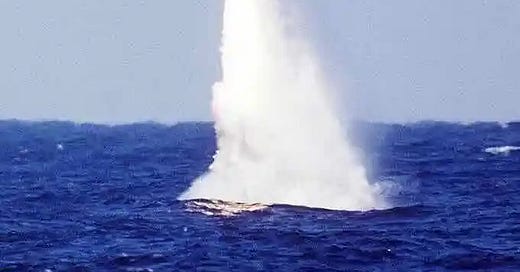This is Part 13 of “The Secret History of Silicon Valley,” Read Part I here, Part II here, Part III here, Part IVa here, Part IVb here, Part V here, Part VIa here, Part VIb here, Part VII here, Part VIII here, Part IX here, Part X here, Part XI here and Part XII here See the Secret History bibliography for sources and supplemental reading.
———————–
The Future is Clear – Microwave Valley Forever
In 1956 Hewlett Packard, back then a maker of test equipment was the valley’s largest electronics employer with 900 employees. But startups were rapidly spinning out of Stanford’s Applied Electronics Lab delivering microwave tubes, components and complete electronic intelligence and electronic warfare systems for the U.S. military and intelligence agencies. The future of the valley was clear – microwaves.
1956 – Change Everything
In 1956 two events would change everything. At the time neither appeared earthshaking or momentous. Shockley Semiconductor Laboratory, the first semiconductor company in the valley, set up shop in Mountain View. And down the street, Lockheed Missiles Systems Division which would become the valley’s most important startup for the next 20 years, moves its new missile division from Burbank to 275 acres next to the Moffett Naval Air Station in Sunnyvale. (Lockheed’s 8 million-square-foot Sunnyvale complex, was the largest corporate real estate complex in Silicon Valley until the 1990s.)
Lockheed – Building Nuclear Missiles in Sunnyvale
Lockheed, an airplane manufacturer, was getting into the missile business by becoming the prime contractor to build the Polaris, a submarine launched ballistic missile (SLBM) developed by the Navy. The Polaris was unique: it would be the first solid-fuel ballistic missile used by the U.S. Solid fuel solved the safety problem of carrying missiles at sea and underwater and also allowed for instant launch capability. Polaris launched SLBM’s would become the third part of the nuclear triad the U.S. built in the cold war – the Polaris, the B-52 manned bomber, and the Minuteman, and Titan land-based Intercontinental Ballistic Missiles (ICBMs.)
Each Polaris missile carried a 600 kT nuclear warhead, (later Polaris versions carried three) and each ballistic missile submarine carried 16 of these missiles. 10 years after the program started the United States had built and put to sea 41 ballistic missile submarines carrying 656 Lockheed missiles (28.5 ft high, and weighing 29,000 lbs.) The company acquired a 5,000 acre missile test facility near Santa Cruz, and for years would test it’s missiles in the mountains above the valley.
Between 1960 and 1971, Lockheed built three versions of the Polaris missile: with each successive version increasing its range and accuracy.
One can assume that with spares, Lockheed built close to 750 of Polaris missiles in those ten years. That’s ~75 missiles a year, 6/month flying out of Moffett Field.
In 1971, Lockheed built a longer range version of the Polaris—called the Poseidon by enlarging it to the maximum size to fit into the existing submarine launch tubes. In 1990, Lockheed delivered Trident – the current generation of submarine launched ballistic missiles.
You Can Be Sure if It’s Westinghouse
Polaris submarines carried each missile in a separate launch tube. Down the street from Lockheed in Sunnyvale, another American corporate icon, Westinghouse became the developer of the launch tube for the Polaris missile. To launch missiles from a submarine under water, Westinghouse had to solve several problems. The launch tube had to keep the missile snug in its tube until firing. It had to eject the missile with sufficient velocity so it would head to the surface from a 100’ feet under water, and it had to protect the submarine when ocean water came rushing in to the now empty launch tube. Oil-filled shock absorbers solved the cushioning problem and compressed air launched the missile out of the tube through a thin diaphragm that separated the missile from the ocean once the missile launch covers were opened.
Zero to 28,000 people – We Become “Defense Valley”
By 1965 Hewlett Packard, the test and instrumentation company, had grown ten-fold. From 900 people in 1956 it now employed 9,000. Clearly it must have been the dominant company in the valley? Or perhaps it was Fairchild, the direct descendant of Shockley Semiconductor, now the dominant semiconductor supplier in the valley (80% of its first years business coming from military systems) with ~10,000 people?
Nope, it was the Lockheed Missiles Division, which had zero employees in 1956, now in 1965 had 28,000 employees in Sunnyvale. The best and the brightest were coming from across the country to the valley south of San Francisco.
And they were not only building Polaris missiles.
By 1965 Lockheed factories in Sunnyvale, Stanford and East Palo Alto were building the most secret spy satellites and rockets you never heard of. While the 1950’s had made us “Microwave Valley,” the growth of Lockheed, Westinghouse and their suppliers had turned us into “Defense Valley.”
In the next post: Spy Satellites in East Palo Alto and Stanford – Corona, WS-117, Samos, Ferret’s and Agena in Part XIV of the Secret History of Silicon Valley.






Steve, this was another great piece, I am enjoying this series, thank you for taking the time to write it up! Reading this part, brought back memories, as a kid in the '60s and '70s my father was a middle management engineer with IBM, in their facility on Cottle Road in San Jose. He used to use the term "Mil-Spec" referring to the components they purchased and systems they built that had to comply with Military Specifications which among other things required accuracy to 4 decimal points.